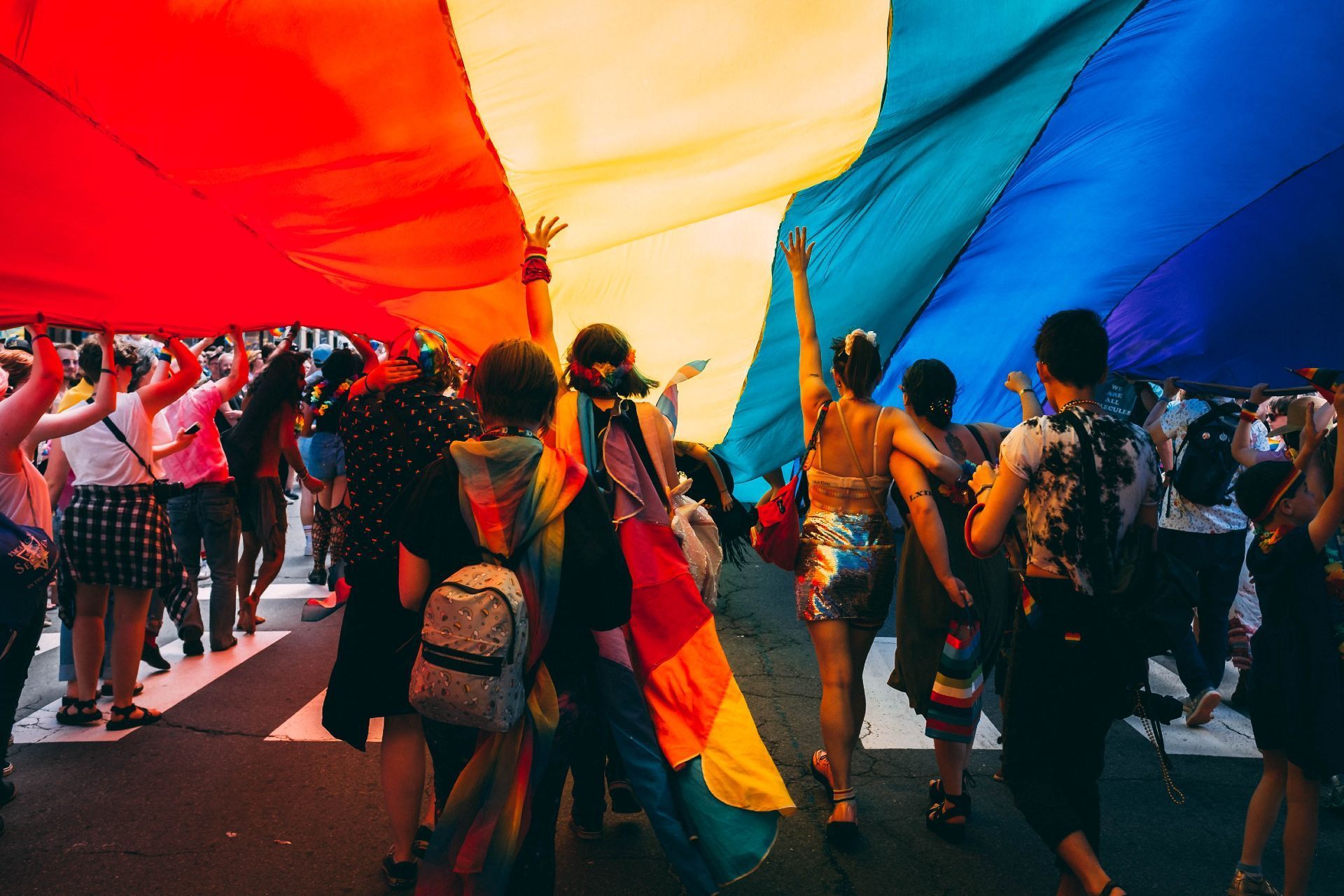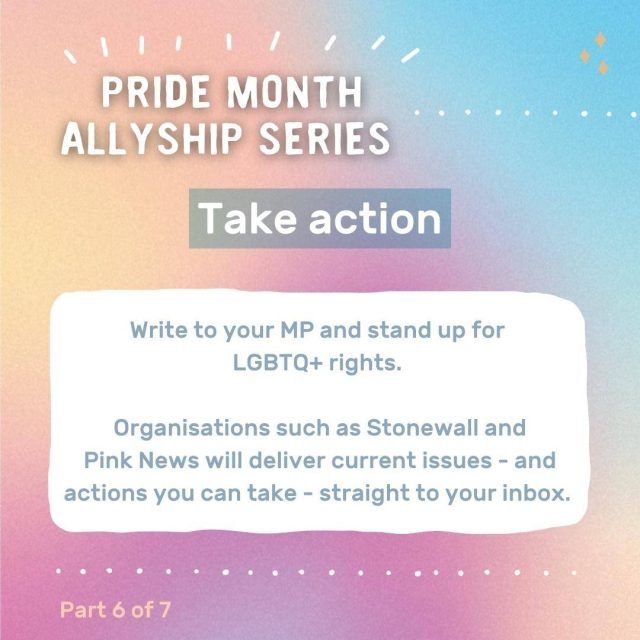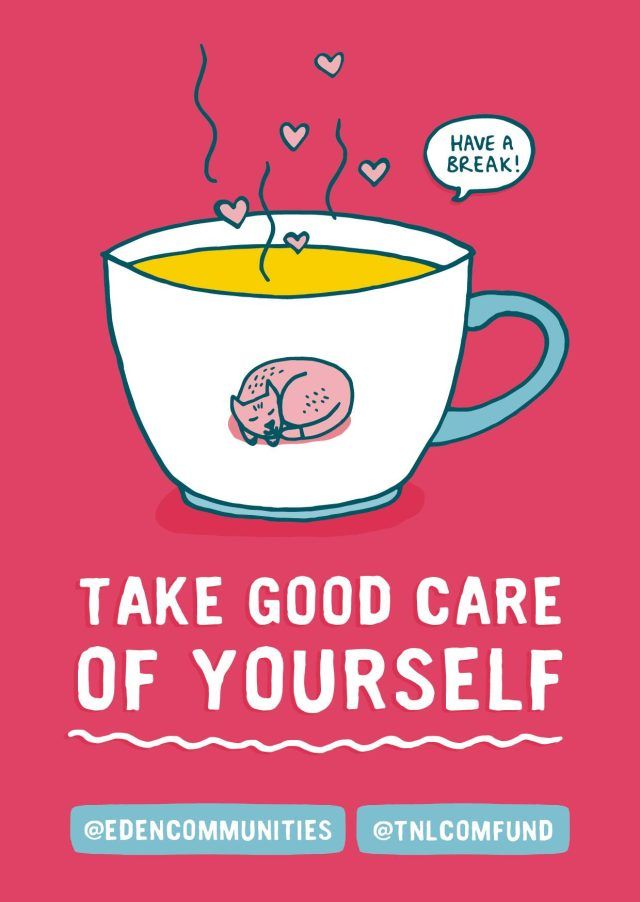How to be an LGBTQ+ ally in your community
As part of Pride month and far, far beyond, we’re sharing our top advice on how to be an ally to LGBTQ+ people in your community. Much of this will help you be an ally to any group that has faced marginalisation.

As part of Pride month and far, far beyond, we’re sharing our top advice on how to be an ally to LGBTQ+ people in your community. Much of this will help you be an ally to any group that has faced marginalisation.
Being an ally is about much more than believing in equality and being anti-discriminatory. It’s actively supporting LGBTQ+ people through every day actions as a straight/heterosexual person. You can also be an ally to people of colour as a white person, or a disability ally even though you might not be disabled yourself.
A top tip before we get started – it’s almost impossible to be a perfect ally (but hey, who’s perfect?!) but continuous learning will – slowly but surely – make a big difference in your community.
Show your support
Creating an open environment where people know they can be themselves can start with the simplest things. Wearing a rainbow pin badge or lanyard at an event and adding your preferred pronouns to your name badges/email signature or WhatsApp status can all go a long way to normalising discussions about sexuality and gender.
Before displaying any LGBTQ+ icons, follow the advice below and take the time to learn more about LGBTQ+ issues – this will help you feel more confident and equipped to be an everyday ally.
Attending Pride or LGBTQ+ events is also a great way to show solidarity – but, again, do some reading beforehand and be sure to get involved in wider LGBTQ+ conversations – Pride is much more than a colourful party and knowing the history and struggles behind Pride is one of our top allyship pointers.
We’ve prepared some social media graphics you can share on your channels to show your support. If you’re taking part in the Month of Community, we also have a Pride Month of Community stamp you can use!
Download our social media Pride graphics Month of Community stamp: Pride
Listen
If somebody wants to talk to you, simply being there for them is usually enough. Let them know they can talk to you, confidentially, whenever they need. If you don’t know how to respond, simply listening or asking gentle questions if they seem stuck will make people feel heard. If somebody does share information about their gender or sexuality with you, don’t assume it’s public knowledge or a ‘secret’ either.
Understand language and terminology
It can seem like language evolves by the day and the LGBTQ+ (lesbian, gay, bisexual, transgender, queer/questioning and often intersex and asexual (+IA)) acronym can make even the most supportive allies fear they’ll get a label wrong.
Identifying as a particular label can be a very important part of a person’s identity – especially if they’ve faced struggles in the past or might be questioning their gender or sexuality. Learning common LGBTQ+ terms helps show solidarity and can help you avoid using any terms that might be OK in some groups or social circles, but not others.
If you do get something wrong, apologise, ask discreetly and move on. It’s common for a pronoun or previous name to pop out as they can be so ingrained in our memories, if this happens, simply apologise and move on. It’s also good to say ‘thank you’ if somebody does correct the pronouns you have used for them. Some people find it helpful to practise the name/pronoun of a trans friend in private if they have recently changed their gender.
Don’t make assumptions
Similarly to language, check yourself on terms you might use to assume somebody is heterosexual or cisgender (a person whose gender identifies with the sex they were born with). Using terms such as ‘partner’ rather than husband/wife/boyfriend/girlfriend and sharing your own pronouns stops us assuming heterosexual and cisgender is the ‘norm’.
Educate yourself on the history
Understanding the efforts historically marginalised groups have made is important to appreciate what LGBTQ+ communities have sacrificed. It gives us context to how much has changed, yet how much more we can do.
The first Pride parades took place in 1970s America, 1 year after the Stonewall Riots (relating to the Stonewall Inn in Greenwich Village). Back then, police raids on gay bars were common, and on the 28 June 1969, enough was finally enough and tensions reached boiling point. These riots are considered the turning point for gay rights in the US and across the globe.
This video is a great overview of the riots and racial and gender equality struggles at the time.


Popular culture can be helpful too
Learning what good allyship is has the added benefit of some stonkingly good reads/watches! The below are all recent and highly recommended for their portrayal of LGBTQ+ characters and allies:
- BBC Pride and Joy podcast – LGBTQ+ couples discuss starting a family
- Russian Doll – Netflix. A mind-bending adventure with brilliant gay characters
- Sex Education – Netflix. Hugely entertaining, this series explores the love lives of teenagers with LGBTQ+ characters and allies prevalent throughout
- Can everybody please calm down? – A book by comedian Mae Martin focusing on 21st century sexuality, Mae questions why sexuality and gender is such a big deal in a funny, personal account
- The Green Book – Viggo Mortensen plays a natural ally is this gem of a film, a heart-warming watch yet a sobering view of how black and gay men were treated in the US South
- Screenplays by Russell T Davies – Doctor Who (trans star Yasmin Finney has joined the cast for 2023), Cucumber, Banana, Tofu, It’s a Sin…
- Pink news – the latest LGBTQ+ news
Write to your MP
Subscribing to Pink News and Stonewall will drop LGBTQ+ issues right into your inbox, and when it comes to the passing of new laws or political issues, there’s petitions you can add your voice to – they’ll even find your local MP and provide a pre-written email – you just add your name and hit send.
Call out unacceptable behaviour
This one can be challenging – no-one likes conflict, especially in public spaces. However, if safe to do, respectfully saying ‘your comments about LGBTQ+ people make me feel uncomfortable, I don’t think it’s acceptable to say that’ can change perceptions, and at the very least, let people know their negative LGBTQ+ opinions won’t be welcome in your community.
Be a humble ally
If you do a real-good turn as an ally (such as challenging discrimination), keep it to yourself. Reminding your LGBTQ+ friends that there’s discrimination out there won’t make them feel good. If you’re a business or want to use LGBTQ+ icons or rainbows for your community event, make sure you’re actively being an ally (i.e. educating yourself, standing up for gay rights and equipping your community to be allies) and showing your support in a meaningful way.
Finally, keep learning! Keep asking, keep on the pulse of LGBTQ+ issues and keep championing allyship in your community. Throughout June, we’ll be posting top allyship tips on social media – give us a follow (using the social icons at the top left hand side of the page) and share to your network – you never know who you might inspire.

